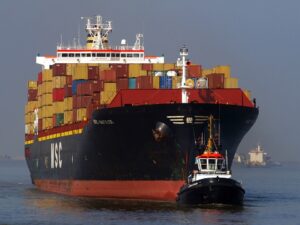As tens of thousands of Russian troops continue to mass along the Ukrainian border, and with diplomatic talks between the U.S. and Russia yet to bear fruit, the threat of a Russian invasion within the next few weeks appears to be growing.
A Russian invasion of Ukraine has the potential to cause extensive and debilitating disruption across global supply chains, resulting in rising input costs to a heightened threat of cyber attacks.
Today thousands of U.S. and European companies do business with suppliers in Russia and Ukraine, which could be at risk during a prolonged military conflict. Analysis of global relationship data on the Interos platform reveals key findings:
-More than 1,100 U.S.-based firms and 1,300 European firms have at least one direct supplier in Russia.
-More than 400 firms in both the U.S. and Europe have tier-1 suppliers in Ukraine.
-Software and IT services account for around 12% of supplier relationships between U.S. and Russian/Ukrainian companies, compared with 9% for trading and distribution services and 6% for oil and gas. Steel and metal products are other common items purchased from the two countries.
While the proportion of U.S. and European supply chains that include tier-1 Russian or Ukrainian suppliers is relatively low, this figure increases significantly when indirect relationships with suppliers at tier 2 and tier 3 are included.
-More than 5,000 firms in both the U.S. and Europe have Russian or Ukrainian suppliers at tier 3.
-More than 1,000 firms in both the U.S. and Europe have tier-2 suppliers based in Ukraine, with around 1,200 dependent on suppliers at tier 3.
Supply chain and information security leaders in U.S. and European organizations should review their dependence on Russian and Ukrainian suppliers at multiple tiers as a key first step in their efforts to assess risk exposure in the region and ensure operational resilience.
In the event of a Russian invasion of Ukraine, there are four major areas where global supply chains could be negatively impacted:
1. Commodity prices and supply availability
2. Firm-level export controls and sanctions
3. Cyber security collateral damage
4. Wider geopolitical instability
Although many of these risks may not materialize and represent a worst-case scenario, executives should be thinking now about the potential impact of a Russia-Ukraine military conflict on their operations over the coming months. These same leaders need to ensure that appropriate contingency plans are in place for their most critical supply chains and riskiest suppliers in the region.
With proper analysis, planning, and execution through knowledgeable logistics companies, it is possible to mitigate significant risk and ensure operational resilience.














